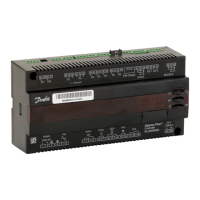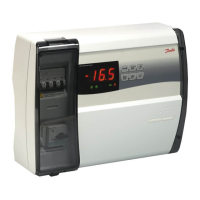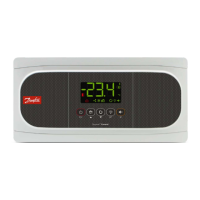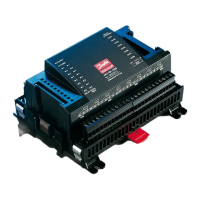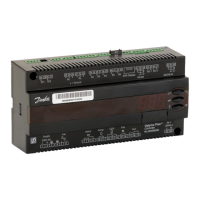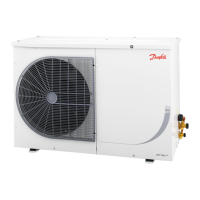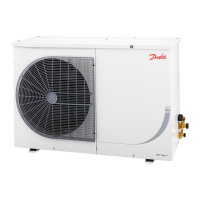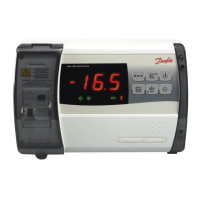20 RS8FE102, 080R9278 © Danfoss A/S (RA Marketing/MWA), Nov. 08
OPTYMA
TM
Control three-phase Operation and Maintenance Guide
Variables Explanation Value Default
tA NO – NC alarm relay switching 0 = activates when alarm is on
1 = deactivates when alarm is on
1
AU Auxiliary/alarm relay control
(only on version with relay fitted)
0 = alarm relay
1 = manual auxiliary relay
controlled via AUX key
2 = automatic auxiliary relay
managed by StA temp. setting
with 2°C differential
3 = relay disabled
4 = pump-down function (page 21)
5 = free voltage contact for
condensing unit (AUX relay and
compressor relay in parallel)
0
StA Temp. setting for aux. relay -45…+45°C 0
In1 Man-in-cold-room alarm
Select input INP1 on the board as compressor
protection alarm or as man-in-cold-room alarm
(contact NC).
0 = compressor protection
1 = man-in-cold-room alarm
0
P1 Password type of protection
(active when PA does not equal 0)
0 = only display set point
1 = display set point, AUX, light
access
2 = access to programming not
permitted
3 = access to second level
programming not permitted
3
PA Password
(see P1 for the type of protection)
0...999
0 = not active
0
reL Software release indicates software version Read
only
Continued...
Switching on the OPTYMA
TM
Control three-phase
After correctly wiring the electronic control,
power up at 400 V AC; the display panel will
immediately emit a beep and all the LEDs will come
on simultaneously for a few seconds.
Compressor activation/deactivation conditions
The OPTYMA
TM
Control three-phase activates the
compressor when the cold room temperature
exceeds setting + dierential (r0); it deactivates the
compressor when the cold room temperature is
lower than the setting.
Manual defrosting
To defrost, just press the dedicated key (see page 16)
to activate the elements relay. Defrosting will not
take place if the end-of-defrost temperature setting
(d2) is lower than the temperature detected by the
evaporator sensor. Defrosting ends when the end of-
defrost temperature (d2) or maximum defrost time
(d3) is reached.
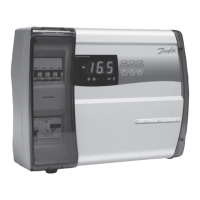
